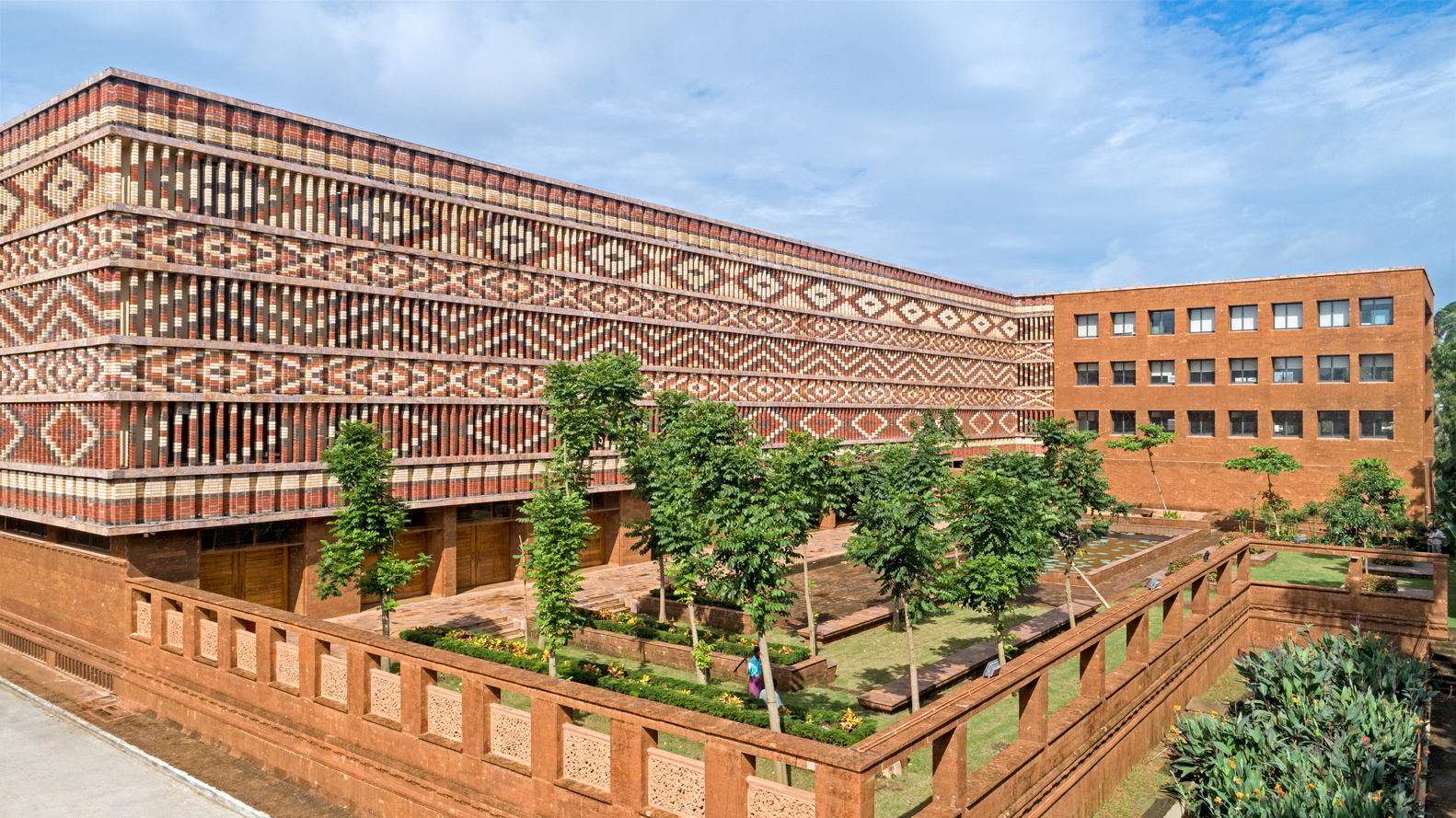The design of public buildings is often associated with authority, magnanimity, and righteousness. But, as much as they represent the seat of democratic power, public buildings also offer a sense of security. These buildings support the everyday life of people by catering to their administrative and infrastructure needs. As the name suggests, public buildings are accessible by the public and funded by the public for employees that work for the government- an institutional representative of the public. The buildings that fall into this bracket include post offices, courthouses, government agency offices, libraries, and other civic institutes.
The Current State of Affairs of Public Buildings in India
Public buildings in India are designed as statement-making structures to resemble power, but they often unknowingly convey juxtaposition. They are characterised by monolithic bulky forms, brutalist design style, hierarchical segregation of spaces, and lack of accessibility. With such overwhelming design elements, India’s public buildings manage to be impressive yet uninviting, celebrating yet protecting, welcoming yet gated. Such intertwining denotations make public buildings less approachable.
Most public buildings in India were constructed in the early 20th century, immediately after achieving independence from the British Raj. The buildings were designed to accommodate a footfall that was relevant for its time and age. With 70+ years into the post-independence era, India has grown extensively and so has the country’s demand for infrastructure. Lack of storage, dilapidation and overcrowding are some prominent issues faced in these public buildings.

The Need for Community-Centred Public Buildings
Public buildings across the globe have been long-standing examples of architecture that fall short to connect with their community. Contrary to this, public buildings were designed with the intent to make civic services accessible to all. Such drastic differences in interpretation have surfaced the need to re-invent the architecture of public buildings. There is much scope to visualise public buildings as holistic growth centres for a community. Hence, contemporary architects are attempting to create public institutions as community anchors.
Initiatives such as the Public- Private Partnerships (PPP) can result in the creation of user-friendly public buildings. To begin with, public buildings must be designed for accessibility and efficiency as treated as wholesome places. The site should encourage gathering and community participation in civic activities to transform public buildings into idea labs. The building needs to appear as a part of the surrounding through integration of landscape and not isolated with barriers. Building facades should be designed to have a dialogue with the visitors, in a way representing interaction. Planning for growth and ample storage is another great way of centering the design around a thriving community.

Noteworthy Public Building Designs in India
Public buildings are community harbours of growth. They help civilisations flourish by serving people with information, justice, and administration. In an attempt to stay true to these values, architects around the world have produced unique civic architecture ideas.
The first of the lot is Krushi Bhavan located in Bhubaneswar, Odisha. The building is an administration centre for the Government of Odisha’s Department of Agriculture & Farmers’ Empowerment. The building stands as a testament to the spirit and hard work of the agrarian communities in Odisha, which makes the state, the third-largest contributor to India’s grain supplies. Designed by Studio Lotus, this public building re-imagines the relationship between the state and its people. With a built-up area of 12077 square metres (ca. 129,996 square feet), Krushi Bhavan accommodates an office space for 600 people, a library, auditorium, and allied spaces for community learning and engagement.

The ground floor of the building is designed as a free-flowing public space that can be used as an interaction space by the visitors making the building feel welcoming and accessible. To make the design climate-responsive, the building is designed around a central courtyard and a public plaza. The site also houses an informal amphitheatre to host public gatherings and cultural programmes.
The building seeks inspiration from Odisha’s vernacular architecture by adopting traditional materials, construction techniques, and craftsmanship. Skilled artisans were employed to showcase agricultural folklore and mythological stories in the building through paintings and ornamentation. The plaza is used for hosting exhibitions, workshops, weekly markets, school visits, and seminars to make the building a hub for imparting knowledge and skill.
The VVIP Circuit House I in Pune, Maharashtra serves as a guest house and a public arena. The building is designed by Sunil Patil and Associates by seeking inspiration from the traditional “Wadas’ of Pune. Spanning across 10540 square metres (ca. 113,452 square feet), the circuit house has high-footfall throughout the day. The building has received a 5 star GRIHA rating and is designed to liberate public buildings from the stereotypical design notions. This is achieved by adopting passive design strategies such as renewable energy and design efficiency.
The circuit house is designed around a central courtyard making the building suitable for Pune’s hot and humid climate. The courtyard is accessible to the people for hosting interactive events of community significance. The building facade on the south and west is a combination of vertical and horizontal louvres that provide thermal comfort by shading. The facade fenestration also ensures that ample natural light is invited into the building thereby enhancing space quality. Solar panels have been installed on site to supplement the energy needs of the circuit house.
With the rise of such community-driven layouts of public buildings, the future of civic architecture looks promising. The significance of people is getting re-established in public buildings by acknowledging their participation in state affairs. An increased awareness among people about the role of public architecture can further help in creating strong civic institutions as the hotspots of community development.
Sources:
- Eleven Principles for Turning Public Buildings into Community Anchors
- From Forbidding Monoliths to Centers of Civic Life
- 9 Government Buildings That Teach Valuable Lessons in Design
Disclaimer: The information contained herein have been compiled or arrived at, based upon information obtained in good faith from sources believed to be reliable. The opinions expressed within the content are solely the author’s and can be subject to change. The image featured in this article is only for illustration purposes. If you wish the article to be removed or edited, please send an email to editor@biltrax.com
Discover more from Biltrax Media, A Biltrax Group venture
Subscribe to get the latest posts sent to your email.






















